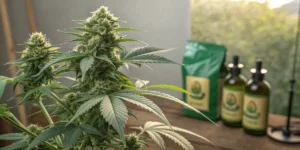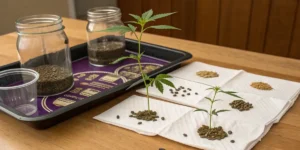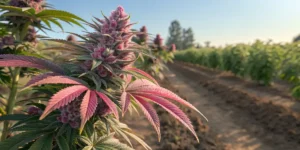What if your next grow delivered explosive yields, sticky buds, and knockout potency? Stick around, because Hulkberry strain might be exactly what you’re looking for. The way this strain develops, and how to guide it to peak performance, could completely change your harvest, giving you an experience that blends visual impact, strong aroma, and rewarding flavor.
Hulkberry Strain: Exceptional Genetics and Effects
Origins and Genetics
Hulkberry strain emerges from a calculated cross between OG Kush, famed for its earthy, piney aroma and dense buds, and Strawberry Diesel, prized for its sweet berry notes and energizing lift. By combining these two, breeders created a sativa-leaning hybrid that stretches tall but retains tight node spacing. Each plant expresses a robust structure, showing thick stems capable of supporting heavy colas loaded with resin.
Breeders repeatedly backcrossed to stabilize traits like mold resistance and consistent terpene profiles. As a result, every seed delivers plants with similar flowering times and bud structures. Whether you cultivate in soil, coco coir or hydroponics, you’ll observe uniform leaf color and predictable internodal lengths, streamlining canopy management. These genetics stand out for producing a vivid terpene blend: sweet strawberry over tones of diesel, underpinned by earth and pine.
Effects and Potency
With THC levels typically testing between 22% and 27%, Hulkberry strain delivers a well-rounded, potent high. Within minutes of consumption, users report a brain-boosting buzz that sparks creativity and elevates mood. This cerebral phase pairs with a gentle wave of physical relaxation that eases muscle tension without inducing lethargy or couch-lock.
Flavor-wise, Hulkberry strain unfolds as a dynamic symphony: an initial rush of diesel fuel and pine, mellowing into ripe strawberry sweetness and zesty citrus. Dominant terpenes include myrcene, which brings soothing effects; limonene, known for mood elevation; and caryophyllene, which adds a spicy, peppery finish. This complex blend makes each puff a layered experience that appeals to the senses.
Environmental Requirements for Growing Hulkberry Strain
Setting Up the Growing Cannabis Space
Choose a grow tent or dedicated room with at least 1.2 meters of vertical clearance to accommodate Hulkberry strain’s vigorous stretch. Install an oscillating fan at canopy level to maintain constant airflow, preventing stagnant pockets that lead to mold. A high-quality carbon filter on your exhaust system keeps the powerful aroma contained and your climate stable.
Opt for fabric pots filled with a light, airy mix—coco coir blended with perlite or pumice—to promote healthy oxygenation around roots. Reflective wall linings, like Mylar or high-whiteness paint, bounce light onto lower bud sites, reducing shadow zones. Position a digital hygrometer and thermometer at canopy height to read microclimate conditions accurately and adjust ventilation or heating accordingly.
Temperature and Humidity
Maintain daytime temperatures between 21 and 27°C with nighttime dips of a few degrees to mimic natural outdoor shifts. During the vegetative phase, keep relative humidity around 60% to support lush leaf growth. As flowering begins and buds swell, lower humidity to 45–50% to prevent bud-rot and mildew in those tight, resinous clusters. Always ensure continuous air circulation to avoid moisture accumulation.
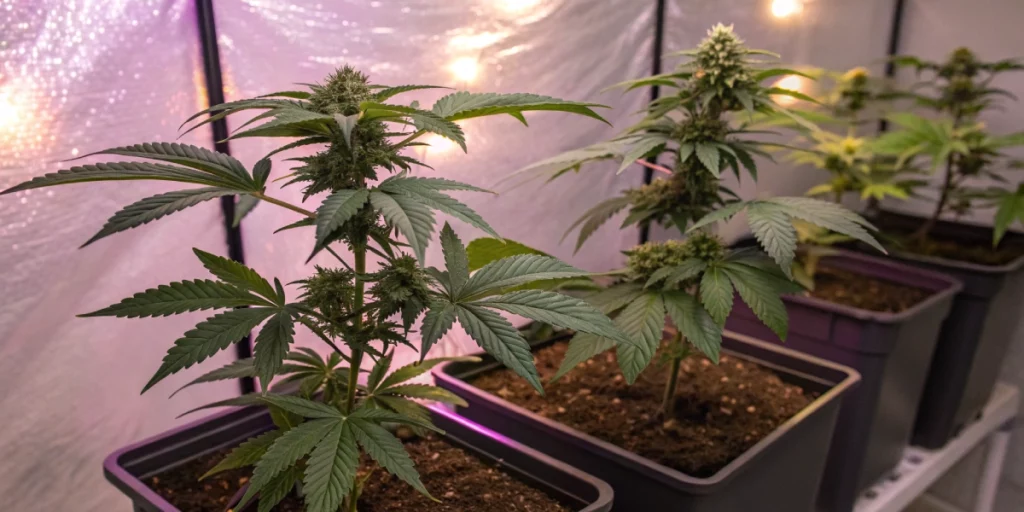
Indoor Cannabis Cultivation
Advantages of Growing Indoors
Growing Hulkberry strain indoors offers unmatched control over every aspect of your garden. You can fine-tune light schedules, temperature, humidity and nutrients, insulating plants from erratic weather, pests and outdoor pollutants. This environment lets you push plants to their genetic limits, achieving multiple harvests per year and consistent outcomes.
Training techniques like topping, low-stress training and screen-of-green (ScrOG) thrive indoors, enabling a flattened canopy for uniform light distribution. Hulkberry responds strongly to these methods, producing compact, resin-laden colas across the canopy. Indoor growers using full-spectrum LEDs or CMH lights often note enhanced trichome production and denser flower clusters.
Lighting Needs
Provide at least 300 watts of actual draw full-spectrum LED lighting per square meter of grow space. Use an 18/6 light schedule in the vegetative stage to encourage leafy growth. When ready to flower, switch to 12/12 to trigger bud development. Keep fixtures 40–50 cm above the canopy, adjusting height as plants grow to maintain optimal PAR without causing heat stress.
Outdoor Cannabis Cultivation
Best Conditions for Outdoor Growth
Hulkberry strain thrives under Mediterranean-like conditions: long, sunny days and mild nights. Choose a location with six or more hours of direct sunlight daily. Good airflow is crucial—avoid planting in valleys or tight corners where air can stagnate, which elevates mold risk.
Prepare garden beds with well-amended soil, mixing in organic compost and perlite to improve drainage and nutrient-holding capacity. Apply mulch around plant bases to retain moisture and regulate soil temperatures during heat spikes. Plant outdoors after the last frost, and when buds become heavy, support branches with stakes or a trellis net for even development.
Advantages of Growing Hulkberry Strain
Hulkberry strain’s hallmark is its blending of volume and potency. Indoors, you can expect yields up to 500 g/m² under optimal conditions; outdoors, individual plants often exceed 700 g. Its vigorous growth and tolerance to mild environmental stressors make it a reliable choice for various climates and skill levels.
Built-in resistance to powdery mildew and mold adds another layer of confidence in humid environments. The strain’s structure recovers quickly after training and pruning, allowing growers to experiment with advanced techniques without losing momentum. Robust aromas and flavors, along with generous yields, position Hulkberry strain as a cultivar that satisfies both market demand and personal enjoyment.
Problems in Cultivating Hulkberry Strain
Overwatering
Hulkberry strain’s dense root network can hold onto excess moisture, causing hypoxic conditions that stunt growth and invite root pathogens. To avoid overwatering, wait until the top 2–3 cm of medium are dry before watering again. Use a soil moisture probe or conduct a finger test. Ensure containers have sufficient drainage holes to let excess water escape freely.
Pest Infestations
Even with strong genetics, Hulkberry strain can attract spider mites, whiteflies and thrips in indoor gardens. Check plants at least twice a week, especially under leaves and around nodes. Preventative sprays of neem oil or insecticidal soap can suppress early infestations. Introducing predatory mites or ladybugs fosters natural control, reducing reliance on chemical interventions.
Similar Strains
Chemdog
Chemdog carries a legendary reputation for its pungent diesel aroma and clear, uplifting high. It finishes flowering in about eight weeks, offering medium to high yields and a robust structure similar to Hulkberry strain. Its spicy, earthy flavor profile enhances the sensory experience and resonates with growers seeking bold aromas.
Moby Dick
Moby Dick lives up to its name with towering plants and giant colas that can yield over 1 kg outdoors. A sativa-heavy hybrid, it flowers in nine to ten weeks and delivers a strong, euphoric high. Its citrus and pine scent blends nicely with Hulkberry strain’s berry undertones, making it a complementary choice for mixed grow rooms.
Tangerine Dream Auto
Tangerine Dream Auto offers ease and speed, completing its life cycle in about eight weeks from seed. This autoflowering variety produces compact plants with dense, resin-rich buds and a tangy citrus aroma. It’s a practical alternative to Hulkberry strain for growers looking to shorten turnaround times without sacrificing flavor complexity.
Week-by-Week Growth Plan for Hulkberry Strain
Week 1 – Germination and Seedling Stage
Place seeds between damp paper towels in a warm, dark place. Within two to three days, tiny taproots emerge. Carefully sow each seed about 1 cm deep in small starter pots filled with a light, airy medium. Keep temperature at 22°C and humidity at 70% to support rapid root growth.
Week 2 – Early Seedling Growth
Seedlings pop through soil and form their first true leaves. Provide 18 hours of gentle light, keeping seedlings 20–30 cm from LED bulbs to avoid heat stress. Water sparingly to avoid over-saturation. No nutrients needed yet; let seeds fuel early growth.
Week 3 – Continued Seedling Development
Plants display stronger stems and more leaves as roots expand. Introduce a quarter-strength nutrient solution, monitoring for signs of nutrient burn. Maintain 65% humidity and 22–24°C. Light intensity can increase slightly to prevent stretching.
Week 4 – Vegetative Growth Begins
Transplant into 7–10 L containers with quality soil or coco mix. Increase nutrient strength to 50% and start low-stress training by gently bending shoots to shape an even canopy. Maintain 18/6 lighting and temperatures around 24°C.
Week 5 – Accelerated Vegetative Growth
Leaves and branches proliferate rapidly. Feed full-strength vegetative nutrients, focusing on nitrogen for foliage growth. Continue training techniques like defoliation and LST to maximize bud site exposure. Ensure humidity around 60% and good airflow.
Week 6 – Preparing for Flowering
Early buds appear and pre-flowers show pistils. Shift nutrient formula to reduce nitrogen and boost phosphorus and potassium. Tuck or remove large fan leaves blocking light. Lower humidity to 50% to protect developing flowers.
Week 7 – Transition to Flowering
For photoperiod grows, switch lights to 12/12. Bud sites swell and hairs extend. Apply bloom boosters and adjust light height to maintain PAR levels. Watch for stretch and support branches as needed.
Week 8 – Early Flowering
Buds fatten and resin starts forming on calyxes. Feed bloom nutrients at three-quarter strength. Remove any large leaves overshadowing buds to improve airflow and light penetration.
Week 9 – Mid-Flowering
Colas swell and trichomes become more visible. Maintain stable feeding and environmental conditions. Inspect daily for pests or mold. Use stakes or netting to support heavy branches.
Week 10 – Bud Development
Flowers reach peak density, with abundant resin glands. Consider flushing medium with plain water to remove excess nutrients for smoother taste. Keep temperatures stable and maintain good ventilation.
Week 11 – Late Flowering
Trichomes shift from milky to amber, signaling peak cannabinoid conversion. Reduce feeding and keep humidity low to preserve trichome health. Perform final defoliation for airflow and inspect for any issues.
Week 12 – Harvesting Time
Harvest when 70–80% of trichomes appear cloudy. Cut branches and hang in a dark, ventilated space at 50% humidity and 18–20°C. Dry for 7–10 days until stems snap, then trim and jar for curing.
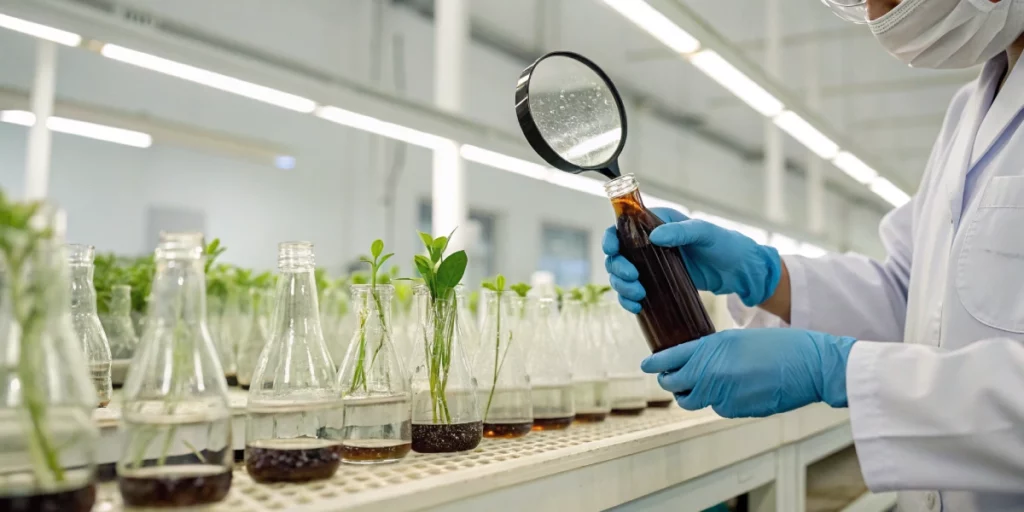
FAQs about Hulkberry Strain
How long does Hulkberry strain take to flower?
Hulkberry strain usually takes 9–10 weeks to reach full bloom indoors, while outdoor harvests arrive around early October in temperate climates. The sativa influence extends flowering slightly compared to quick-blooming indicas, but the high yields and potent effects make the wait worthwhile.
What kind of environment does Hulkberry strain prefer?
This strain excels in warm, Mediterranean-like conditions with daytime temperatures between 21–27°C and nighttime dips to mimic natural cycles. Indoors, maintain 45–50% humidity during flowering with strong airflow. Outdoors, select a sunny, breezy spot after the last frost for best results.
Can I train Hulkberry strain for higher yields?
Absolutely. Hulkberry strain responds exceptionally well to training methods like low-stress training (LST), topping, and screen-of-green (ScrOG). These techniques flatten the canopy, expose more bud sites to light, and significantly boost your overall harvest without adding undue stress.


